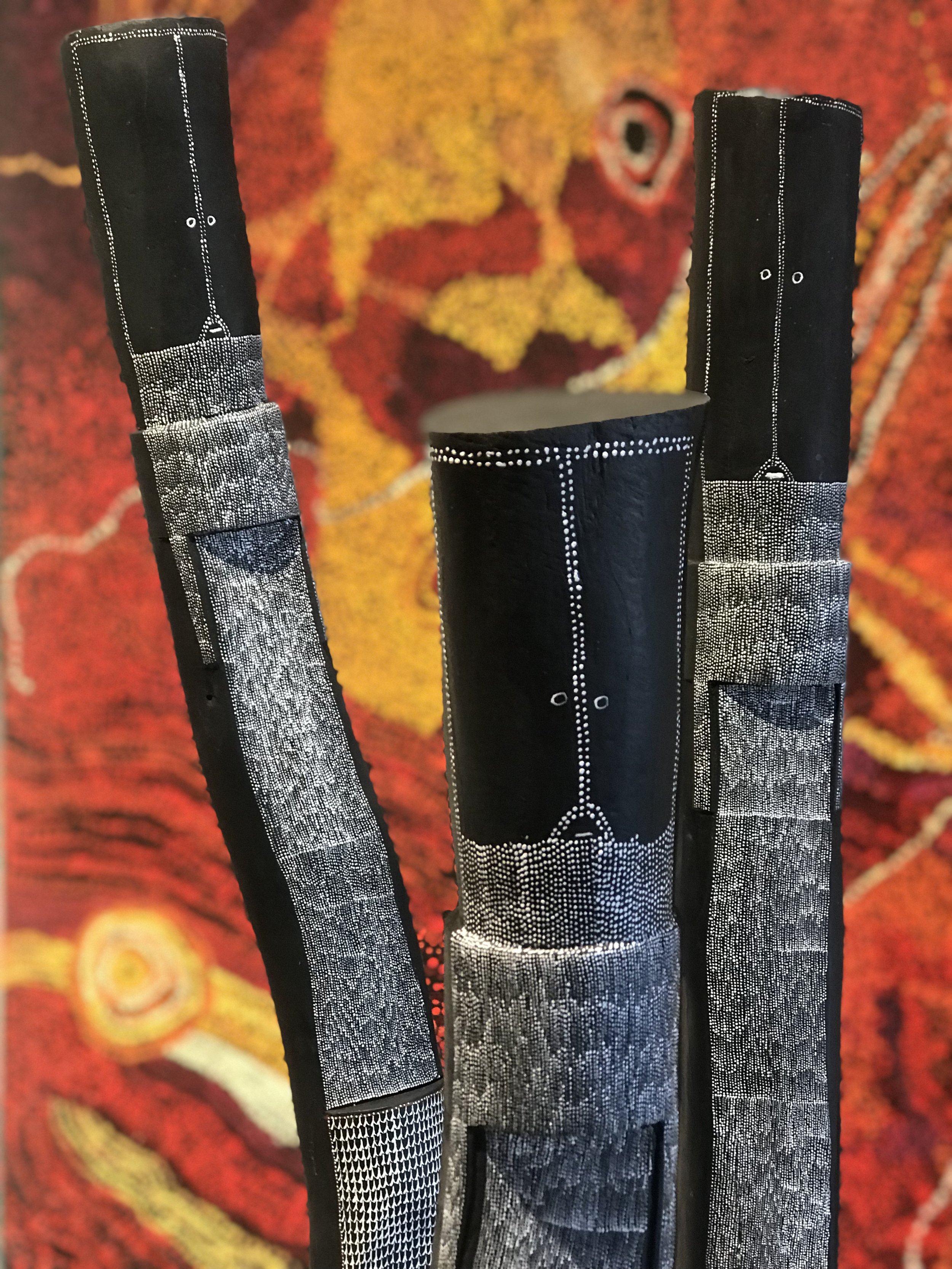Sculpture Bolkkime – Sculpture Today :
New Works from Maningrida Arts and Culture
Central Arnhem artists have been at the forefront of the Contemporary Art movement, engaging Australian and international audiences with their painting and sculpture, which masterfully straddles innovative individual practice, long-standing cultural knowledge systems and social relations of creative production.
Sculpture Bolkkime - Sculpture Today: New Works from Maningrida Arts and Culture debuts this month in the United States with works by leading Kuninjku and Kunibidji sculptors, Owen Yalandja (Kuninjku), Sonia Namarnyilk (Kunibidji), Samson Bonson (Gurr-goni/Kuninjku) and Don Djorlom (Kuninjku), who specialize in contemporary representation of cultural spirit beings.
Aboriginal people in the rocky environments of western and south-western Arnhem Land tell of the existence of tall slender spirits which they call Mimih. The name Mimih is well known throughout the top end of the Northern Territory. Aboriginal groups living in the rocky environments of this region believe that Mimih spirits live in a social organization similar to Aboriginal people and that Mimih society existed before humans. Mimih are credited with instructing the first people with knowledge relating to survival in the rocky environment of the Arnhem Land plateau. Mimih are said to have taught the first humans how to hunt and butcher game and also how to dance, sing and paint. ‘Clever’ men, or Aboriginal men with supernatural powers, sometimes befriend the Mimih and are taught their songs and dances and shown their secret places. The Mimih are like people using the same kinship terms and speaking the same language as the local Aboriginal group. They live in families like humans and it is said that some of these Aboriginal men with mystical knowledge have spent time living with them in their camps.
In essence, mimih spirits are tall, slender, fragile beings that inhabit the rocky escarpment regions of Kuninjku country. Mimih are however, terribly thin, having necks so slender that a stiff breeze would be fatal. For this reason they emerge only on windless days and nights to hunt. As soon as a breeze develops, the Mimih are said to run back to their rocky caverns and disappear inside. Mimih is also a term used to describe a range of spirit figures that have similar characteristics and are associated with particular sites.
Maningrida Arts & Culture is based on Kunibídji country in Arnhem Land in Australia’s Northern Territory. The area where artists live encompasses 7,000 square kilometers of land and sea, and over 100 clan estates, where people speak more than 12 distinct languages. Aboriginal people in this region are still on country, surviving and resilient because their country is the centre of their epistemology, their belief system, culture – djang — ongoing, eternal, life-giving transformative power that accounts for every aspect of existence. Djang also refers to the creation ancestor, the country where spirit resides, and to ceremonial designs and songs that represent that being.
On view until August 26 in Sun Valley

















